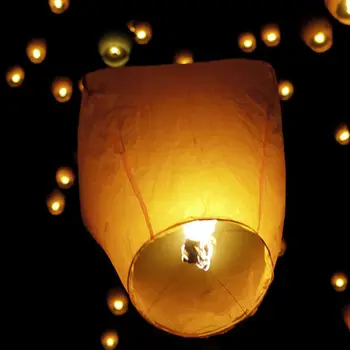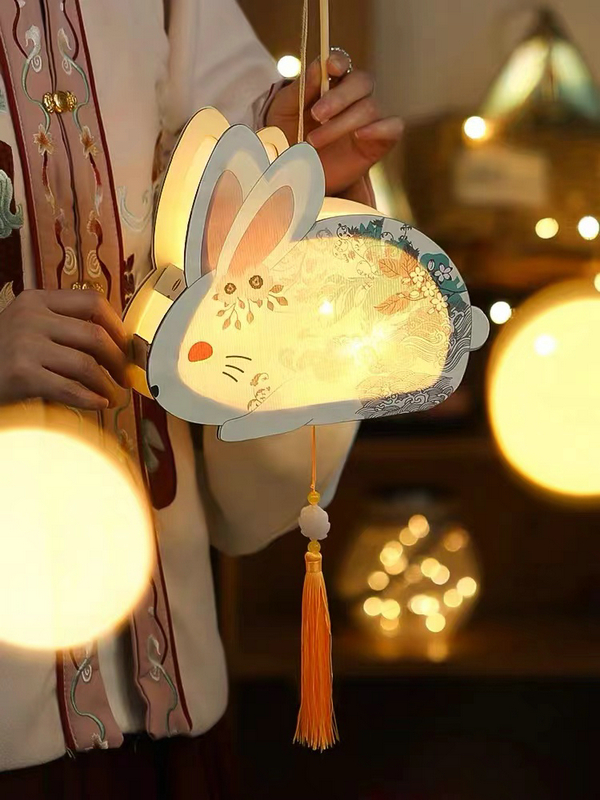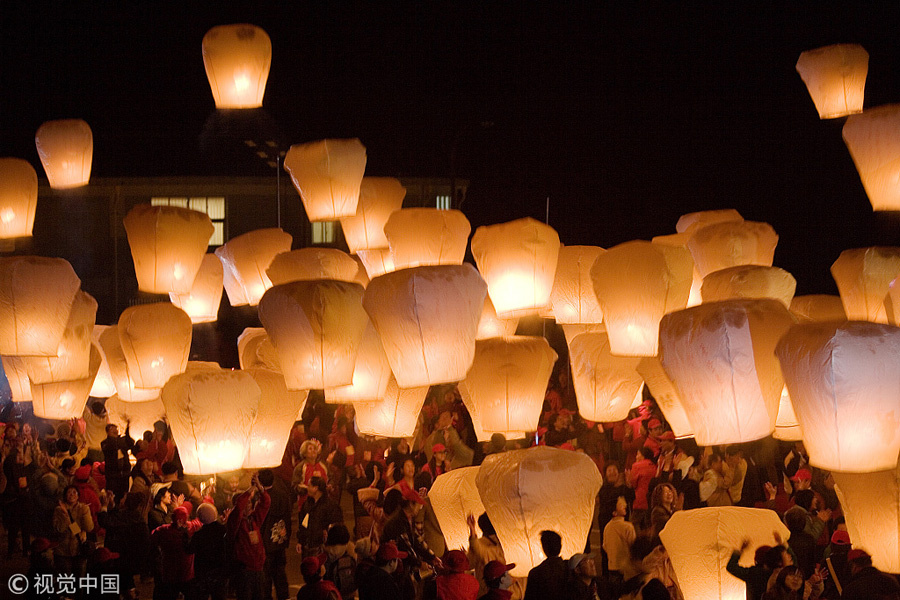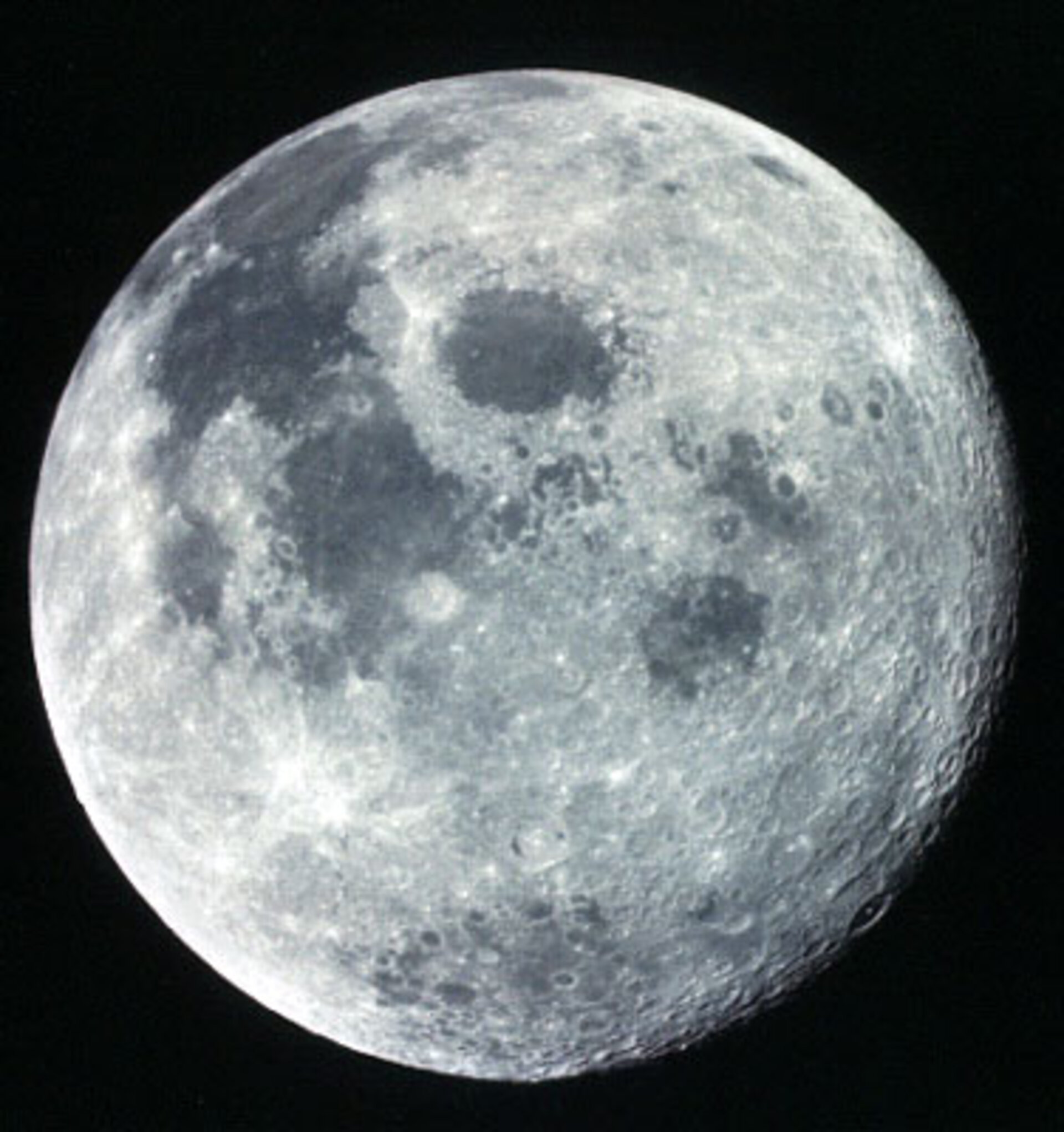Physical Address
304 North Cardinal St.
Dorchester Center, MA 02124
Physical Address
304 North Cardinal St.
Dorchester Center, MA 02124
”
Let me tell you about this fascinating legend I recently discovered while researching Chinese folklore. Picture this – deep in the misty mountains of Guangxi, there lived this absolutely radiant young woman everyone called Moon Sister. Now, what made her special wasn’t just her almond-shaped eyes that sparkled like dewdrops, but her heart of gold that shone even brighter. I imagine her moving through the village paths with baskets of golden pomeloes, their citrusy fragrance trailing behind her like a sweet perfume.
You know what’s interesting? The villagers still talk about how she’d personally deliver these juicy fruits to elders and children alike. There’s this one story about old Granny Li receiving a pomelo with perfect crescent-shaped segments – almost like Moon Sister had arranged them that way intentionally! Makes you wonder, doesn’t it? Was she already connected to the lunar mysteries even then?

What really captures my imagination is how her simple act of sharing became legendary. They say whenever she peeled a pomelo, the air would fill with this energizing citrus mist that made people’s spirits lift. Teenage girls would collect the fragrant rinds to make natural perfumes, while farmers used the seeds as good luck charms. It’s no wonder that centuries later, the Zhuang people still honor her tradition during mid-autumn celebrations!
Now here’s something that might surprise you – some elders claim Moon Sister’s pomelo trees bore fruit year-round, defying normal harvest seasons. Could this be why her story endured through generations? Or maybe it’s because she embodied that perfect blend of earthly kindness and celestial mystery. Either way, next time you enjoy a pomelo, remember – you’re tasting a piece of lunar legend!
Let me tell you about Moon Sister’s crafty hands – this girl could turn bamboo and rice paper into magic! I’ve always been amazed by how she’d sit under the old banyan tree, her fingers dancing like dragonflies as she twisted willow branches into lantern frames. Remember those swan-shaped lanterns with feathery tassels? She made them glow like captured fireflies using special beeswax candles. And her straw sandals? Local farmers swore they lasted through three harvest seasons!

You’d find her workshop smelling of fresh barley stalks in the mornings. She’d soak the straw in mountain spring water – “Makes them flexible as silk ribbons,” she once told me while braiding sandal straps. The village kids still talk about that peony-patterned lantern she made for the spring festival, its petals unfolding like real flowers when lit. Honestly, who needs machine-made stuff when you’ve got this kind of craftsmanship?

What really blows my mind? She could whip up a new pair of sandals while waiting for rice to cook! Her secret was that curved mulberry wood needle she carried everywhere. I tried copying her technique once – ended up with more straw in my hair than in the sandal. Makes you appreciate why the village elders called her “the girl who weaves moonlight”!
You know what’s really wild to think about? Back in those ancient days before we had any moonlight or twinkling stars, nighttime was this pitch-black blanket that just swallowed everything whole. I can almost picture our ancestors stumbling around their villages, tripping over roots and bumping into each other – it must’ve been equal parts terrifying and frustrating!
Imagine trying to fetch water from the well after sunset, your hands groping in the void while nocturnal creatures made creepy noises all around. Farmers would accidentally trample their own crops, kids couldn’t play hide-and-seek, and forget about late-night storytelling around a fire – you couldn’t even see the flames properly! This endless darkness wasn’t just inconvenient; it made people genuinely anxious about what might be lurking beyond their doorsteps.
 Funny how we take moonlight for granted now, right? According to some fascinating ancient tales, this pitch-black reality lasted for generations. People developed weird habits – sleeping in shifts, memorizing every rock and tree path, even developing extra-sensitive hearing. Makes you wonder, didn’t anyone think to look up and wonder why the sky stayed so stubbornly empty night after night?
Funny how we take moonlight for granted now, right? According to some fascinating ancient tales, this pitch-black reality lasted for generations. People developed weird habits – sleeping in shifts, memorizing every rock and tree path, even developing extra-sensitive hearing. Makes you wonder, didn’t anyone think to look up and wonder why the sky stayed so stubbornly empty night after night?
 What’s really mind-blowing is how they adapted. They invented glow-in-the-dark fungi lamps (way before bioluminescence was cool!), crafted reflective stone pathways, and told spooky stories about night demons to explain the unnatural darkness. But deep down, everyone craved that soft, silvery light we now associate with moonlit nights – they just didn’t know it yet.
What’s really mind-blowing is how they adapted. They invented glow-in-the-dark fungi lamps (way before bioluminescence was cool!), crafted reflective stone pathways, and told spooky stories about night demons to explain the unnatural darkness. But deep down, everyone craved that soft, silvery light we now associate with moonlit nights – they just didn’t know it yet.
You know what really blows my mind about Moon Sister’s story? That moment when she stared up at the pitch-black night sky, probably chewing on a pomelo slice like we do during festivals, and suddenly that brilliant idea struck her – why not hang a giant celestial lantern up there? I can almost picture her hands covered in bamboo strips from lantern-making, eyes sparkling with determination as she imagined lighting up the darkness.
But here’s the kicker – she had no clue how to actually reach the heavens! Imagine wanting to install the world’s biggest nightlight but having zero GPS coordinates. This reminds me of when I tried DIY-ing a backyard telescope as a kid – all the enthusiasm in the world, but no practical roadmap. Moon Sister probably paced around her thatched workshop for days, tripping over piles of sesame seeds meant for her journey.

What really gets me is how she transformed ordinary materials into cosmic solutions. That bamboo-and-paper lantern wasn’t just a craft project – it became humanity’s first moon prototype! And those sesame seeds? Forget about sprinkling them on buns – she basically invented stardust. Makes you wonder, doesn’t it? How many world-changing ideas start as ‘What if…’ moments in someone’s backyard?

Here’s a thought – maybe her uncertainty became her greatest strength. Not knowing the path to the sky forced her to pack that crucial straw-sandal-making bow, right? Sometimes the best adventures begin when we embrace the unknown. What would you have packed for a trip to hang lights in the cosmos? A ladder? Rocket boots? Moon Sister went with practicality over fantasy – and honestly, that’s the real #LifeHack here.
You know what really gets me about Moon Sister’s story? Her crazy determination to light up that pitch-black sky. I can just picture her there in the bamboo grove, hands shaking with excitement as she gathers her magical toolkit – that glowing lantern we’ve all seen in traditional Zhuang artwork, that clever straw-sandal bow her grandma probably taught her to make, and those tiny sesame seeds that would become stardust. Makes me wonder – would any of us today have the guts to try climbing to heaven?

What’s really cool is how she turned everyday items into celestial tools. That bamboo-and-rice-paper lantern wasn’t just a light source – it became the prototype for the moon itself! And get this – she packed sesame seeds instead of trail mix. Smart move, right? They’re light to carry and perfect for counting days like nature’s calendar. Makes me think about how we modern folks rely on phone apps instead of simple solutions.
Here’s the part that gives me chills – she must’ve known the risks. No GPS, no weather app, just pure Zhuang girl grit. I imagine her practicing with that sandal-making bow, not just crafting footwear but secretly training to handle whatever the sky journey might throw at her. Makes you appreciate how our ancestors approached problem-solving, doesn’t it?
Let me tell you about Moon Sister’s incredible trek – this part of the story always gives me goosebumps! Armed with her trusty lantern and that precious pouch of sesame seeds, our determined heroine embarked on what I can only describe as an epic odyssey that would test even the strongest warriors.

Picture this: endless mountain ranges that seemed to scratch the heavens themselves, raging rivers that roared like angry dragons, and forests so dense they swallowed sunlight whole. Each morning, Moon Sister would pop a single sesame seed in her mouth – not just for sustenance, but as her personal calendar. ‘Thirty seeds gone means a moon cycle passed,’ she’d whisper to herself, those tiny seeds becoming her connection to the earthly realm she left behind.
Now here’s something fascinating I came across on china-tales.com – some versions of the story say she wore through three pairs of those famous straw sandals! Can you imagine trudging through scree-covered slopes where every step sent pebbles cascading like miniature avalanches? Or forging paths through waist-high snowdrifts that froze her breath into crystal clouds?

What really gets me is how she turned survival into ritual. Each evening’s campfire became a sacred moment – arranging stones for shelter, boiling pine needle tea, and most importantly, counting out those precious sesame seeds with numb fingers. Some nights, when howling winds threatened to steal both her fire and courage, she’d clutch the seed pouch like a prayer bead, its diminishing contents whispering ‘X days closer to the sky’.
Through it all, that lantern never dimmed – its glow attracting curious fireflies that danced around her like mobile constellations. Local legends say these insects guided her through the worst terrain, their bioluminescent trails creating temporary star maps on pitch-black nights. Whether you believe that part or not, it’s a beautiful metaphor for finding light in darkness, don’t you think?
You know what still blows my mind about Moon Sister’s story? That wild moment when she stumbled upon this crazy cloud ocean! Picture this – after who-knows-how-many days trekking through weird landscapes, the air suddenly gets all misty and thick. Then boom! She breaks through some invisible barrier and finds herself standing at the edge of what looks like a never-ending cotton candy sea. The clouds were rolling in waves, glowing faintly like they’d swallowed moonlight whole.
Now here’s the kicker – while catching her breath on what she thought was just another boulder (like those stone formations we saw in the Zhuang mountains), the darn rock starts vibrating! Next thing she knows, this massive stone slab ( ) peels away from the cliffside like some ancient magic carpet. Can you imagine? One minute you’re exhausted and lost, next you’re surfing the stratosphere on a flying rock!
) peels away from the cliffside like some ancient magic carpet. Can you imagine? One minute you’re exhausted and lost, next you’re surfing the stratosphere on a flying rock!
What I love about this part is how it captures that beautiful chaos of discovery. Moon Sister didn’t have some fancy spaceship or wizard’s spell – just pure determination meeting cosmic serendipity. The way those clouds parted as her stone elevator ascended… man, it gives me chills every time. Makes you wonder how many other magical transport rocks are out there waiting to be stepped on, right?
You know that magical moment when you look up at the night sky? Let me tell you, it all started with Moon Sister’s brilliant move that literally lit up our world. After what must’ve felt like climbing through clouds for days (can you imagine trekking in those straw sandals?), she finally reached the perfect spot in the heavens.
Now, here’s the part that gives me goosebumps every time – when Moon Sister struck her flint to light that giant lantern.  The warm golden glow suddenly bathed the entire celestial realm, creating what we now call the moon. But she didn’t stop there! Reaching into her nearly empty seed pouch, she tossed handfuls of sesame into the darkness like cosmic glitter. Each tiny seed burst into silvery starlight, forming constellations that still wink at us today.
The warm golden glow suddenly bathed the entire celestial realm, creating what we now call the moon. But she didn’t stop there! Reaching into her nearly empty seed pouch, she tossed handfuls of sesame into the darkness like cosmic glitter. Each tiny seed burst into silvery starlight, forming constellations that still wink at us today.
I always imagine how breathtaking that moment must have been – the first true night sky blinking to life above our ancestors. What’s amazing is how those humble materials transformed into eternal celestial bodies. The lantern’s gentle radiance became our dependable moon, while those scattered seeds turned into stars that dance across the darkness. Makes you look at sesame differently now, doesn’t it?
Here’s something cool I learned from space researchers – the pattern of those original stars might explain why ancient stargazers saw pictures in the sky. Next time you’re out on a clear night, try spotting the shapes Moon Sister might have unconsciously created with her seed-tossing!

What really blows my mind is how she timed it perfectly – using up her last seeds just as the lantern’s oil reached its peak brightness. Talk about cosmic clockwork! This magical transformation didn’t just light up the night; it created the beautiful sky poetry we still enjoy today. How cool is that?!
You know what’s fascinating? The celestial body we now call the moon wasn’t always named that way. When Moon Sister’s glowing lantern first appeared in the heavens, villagers gathered around their bamboo huts pointing excitedly at the new light source. “It looks like a ripe pomelo hanging in the sky!” someone cried out. Others compared its soft glow to freshly steamed rice cakes. After days of lively debate, they settled on the simple yet poetic name we all know today – the Moon.

Now here’s something I’ve always wondered – why August 15th specifically? From what I’ve heard through generations, that date marks when the lantern’s light reached its fullest brightness. Villagers noticed the moon appeared particularly round and radiant on that night, like a perfect jade disk. They started celebrating it as the moon’s “birthday”, much like how we honor ancestors. Makes you think – our modern Mid-Autumn Festival traditions might have roots in this ancient custom!
The timing couldn’t have been better. August 15th falls during harvest season when pomelo trees are heavy with fruit. Locals say the moon’s golden hue that night matches the color of ripe pomelos left as offerings. Even today, if you visit Zhuang villages during the Moon Birthday celebrations, you’ll see families arranging pomelos in moon-shaped patterns. It’s one of those beautiful traditions that’s survived centuries, don’t you think?

What really gets me is how this simple act of hanging a lantern transformed human understanding of the night sky. Before Moon Sister’s journey, darkness ruled the nights. Now, generations later, we still look up at that same glowing orb and feel connected to her story. Funny how celestial events become woven into our cultural fabric, isn’t it? Next time you see a full moon, try squinting – some elders swear you can still make out the pattern of sesame seeds she scattered across the heavens!
Walking through Zhuang village during mid-autumn, you’ll notice something magical happening with those plump pomeloes. Following Moon Sister’s wisdom passed down through generations, villagers practice this beautiful ritual: every household shares their best pomelo with neighbors and travelers alike. But here’s where it gets interesting – they’ve developed this quirky tradition where anyone caught stealing pomeloes on August 15th gets… wait for it… showered with pomelo petals instead of punishment! Talk about turning mischief into merriment!

I’ve always found it fascinating how this tradition blends accountability with humor. During my visit last autumn, Old Zhang from China Tales told me: “When my grandson tried swiping a pomelo in 2018, the whole village made him wear a pomelo peel hat for three days! Now he’s our most enthusiastic pomelo distributor.” This living tradition keeps Moon Sister’s spirit alive in the most delightful way.
Can you imagine a world where stealing results in community bonding rather than punishment? That’s exactly what happens here. The “no punishment” rule actually encourages more sharing – it’s like Moon Sister knew psychology before it was cool! Villagers explained to me that the public pomelo-petaling ceremony (yes, that’s a thing) creates such good-natured teasing that nobody wants to risk being the year’s laughing stock.

What really surprised me was discovering how this tradition impacts their agriculture. According to People’s Daily, Zhuang village now grows three times more pomelo trees than neighboring areas. The shared responsibility of protecting the harvest while encouraging generosity has literally made their land more abundant – a perfect reflection of Moon Sister’s original vision.
Now here’s the kicker – while writing this, I realized we could learn something from Zhuang’s approach. Next time someone takes office snacks without asking, maybe we should wrap their desk in citrus peels instead of sending angry emails! After all, Moon Sister taught us that light-hearted solutions often create the most lasting changes.